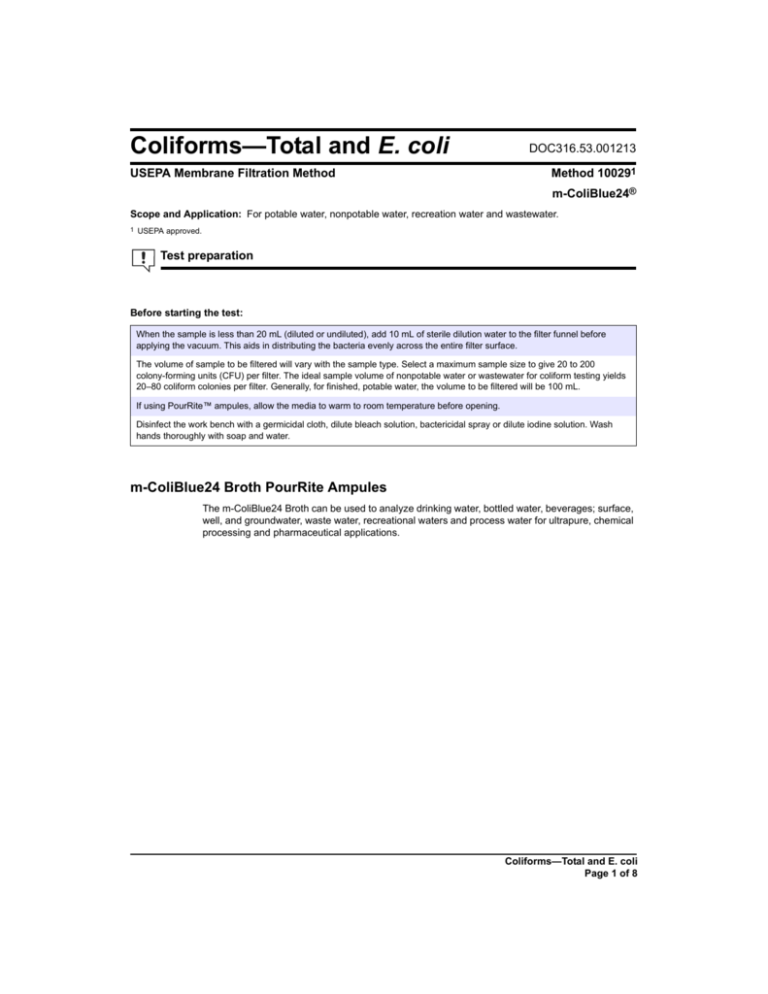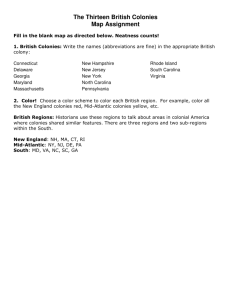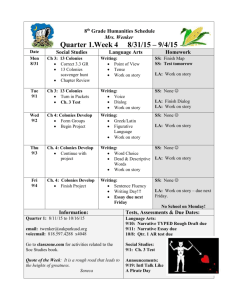
Coliforms—Total and E. coli, MF, m-ColiBlue, 10029
Coliforms—Total and E. coli
USEPA Membrane Filtration Method
DOC316.53.001213
Method 100291
m-ColiBlue24®
Scope and Application: For potable water, nonpotable water, recreation water and wastewater.
1
USEPA approved.
Test preparation
Before starting the test:
When the sample is less than 20 mL (diluted or undiluted), add 10 mL of sterile dilution water to the filter funnel before
applying the vacuum. This aids in distributing the bacteria evenly across the entire filter surface.
The volume of sample to be filtered will vary with the sample type. Select a maximum sample size to give 20 to 200
colony-forming units (CFU) per filter. The ideal sample volume of nonpotable water or wastewater for coliform testing yields
20–80 coliform colonies per filter. Generally, for finished, potable water, the volume to be filtered will be 100 mL.
If using PourRite™ ampules, allow the media to warm to room temperature before opening.
Disinfect the work bench with a germicidal cloth, dilute bleach solution, bactericidal spray or dilute iodine solution. Wash
hands thoroughly with soap and water.
m-ColiBlue24 Broth PourRite Ampules
The m-ColiBlue24 Broth can be used to analyze drinking water, bottled water, beverages; surface,
well, and groundwater, waste water, recreational waters and process water for ultrapure, chemical
processing and pharmaceutical applications.
Coliforms—Total and E. coli
Page 1 of 8
Coliforms—Total and E. coli
Simultaneous total coliform and E. coli screening, method 10029
1. Use sterilized forceps
to place a sterile,
absorbent pad in a sterile
petri dish. Replace the lid
on the dish.
Do not touch the pad or
the inside of the petri dish.
To sterilize the forceps, dip
them in alcohol and flame
in an alcohol or Bunsen
burner. Let the forceps
cool before use.
2. Invert ampules two or
three times to mix broth.
Break open an ampule of
m-ColiBlue24 Broth using
an ampule breaker. Pour
the contents evenly over
the absorbent pad.
Replace the petri dish lid.
Coliforms—Total and E. coli
Page 2 of 8
3. Set up the Membrane
Filter Apparatus. With
sterile forceps, place a
membrane filter, grid side
up, into the assembly.
Alternatively, a sterile
disposable filter unit may
be used.
4. Invert the sample for
30 seconds to mix. Pour
100 mL of sample or
diluted sample into the
funnel. Apply vacuum and
filter the sample. Rinse the
funnel walls with 20 to
30 mL of sterile buffered
dilution water. Apply
vacuum. Rinse again two
more times.
Release the vacuum when
the filter is dry to prevent
damage to the filter.
Coliforms—Total and E. coli
Simultaneous total coliform and E. coli screening, method 10029 (continued)
5. Turn off the vacuum
and lift off the funnel top.
Using sterile forceps,
transfer the filter to the
previously prepared petri
dish.
6. With a slight rolling
motion, place the filter, grid
side up, on the absorbent
pad. Check for trapped air
under the filter and make
sure the filter touches the
entire pad. Replace the
petri dish lid.
7. Invert the petri dish
and incubate at
35 ± 0.5 °C for 24 hours.
8. Remove the petri dish
from the incubator and
examine the filters for
colony growth. Colonies
are typically readily visible;
however, a microscope or
other 10–15X magnifier
may be useful. Red and
blue colonies indicate total
coliforms and blue
colonies specifically
indicate E. coli.
Sometimes only the center
of a colony will show color.
Therefore, a colony with
any amount of red color
should be counted as red
and a colony with any
amount of blue should be
counted as a blue colony.
Red colonies may vary in
color intensity. Blue
colonies may appear blue
to purple. Count all the red
and blue colonies as total
coliforms. Count all the
blue to purple colonies as
E. coli.
Optional testing of red colonies
The m-ColiBlue24 Broth is formulated so that coliforms other than E. coli grow as red colonies.
The percentage of red colonies that are false positives (non-coliforms) is comparable to the
percentage of sheen colonies grown on m-Endo Broth that are false positives (non-coliforms);
therefore, confirmation is not required.
A few varieties of the non-coliform bacteria Pseudomonas, Vibrio, and Aeromonas spp. may grow
on m-ColiBlue24 Broth and form red colonies. Such bacteria can be readily distinguished from
total coliforms by the oxidase test. Pseudomonas, Vibrio, and Aeromonas spp. are oxidasepositive. Total coliforms and Escherichia coli are oxidase-negative. If your sample contains high
levels of interfering bacteria, you can perform an oxidase test to confirm which red colonies are
total coliforms.
Coliforms—Total and E. coli
Page 3 of 8
Coliforms—Total and E. coli
Two oxidase procedures are provided. Count the red and blue colonies on the m-ColiBlue24 Broth
membrane filter before starting the oxidase test.
Oxidase method 1
This method enables you to conveniently and rapidly evaluate membrane filters that have
numerous colonies. Use this method after 24 hours of incubation on m-ColiBlue24 Broth.
Research* shows that the oxidase test cannot be performed on media that undergoes acidification
during bacterial growth. The m-ColiBlue24 Broth is formulated so that the medium does not
undergo such acidification. Consequently, many colonies can be simultaneously tested for their
oxidase reaction using the following procedure.
1. Remove the lid from the petri dish containing the m-ColiBlue24 Broth membrane filter, invert
the lid, and place it on the bench top.
Controls: Positive and negative controls are important. Pseudomonas aeruginosa is
recommended for positive controls and Escherichia coli for negative controls. Use Aqua
QC-Stiks™ for quality control procedures.
2. Drop approximately 0.5 mL of Difco SpotTest™ Oxidase Reagent into the center of the
inverted lid.
3. Using sterile forceps, transfer the membrane filter from the pad and place the filter upright in
the inverted lid.
4. Within 10 to 15 seconds, the oxidase reagent will soak into the filter and cause the oxidasepositive colonies to turn purple. This purple color may be visible in the colony itself or adjacent
to the colony. Oxidase-negative colonies will retain the red color they developed when
incubated on m-ColiBlue24 Broth.
5. After the initial 10 to 15 second reaction time, start counting the red colonies that turn purple.
Count individual colonies by using a microscope with
10–15X magnification
Note: To simplify colony counting place a spare lid on the lid containing the oxidase reagent and
membrane filter. Use a felt-tip pen to mark the lid as you identify the purple colonies. After 30
seconds, you can count marks that indicate purple (oxidase-positive) colonies.
6. Stop counting 30 seconds after initial 10 to 15 second reaction time, because
oxidase-negative colonies will start to develop a purple color.
Note: Bacteria are not killed with this procedure, so colonies may be selected for streaking and for
additional testing.
Colonies that are blue after the initial 24-hour incubation on m-ColiBlue24 Broth are almost always
E. coli and do not need confirmation with the oxidase procedure.
Oxidase method 2
This method is the official oxidase test described in Standard Methods for the Examination of
Water and Wastewater, 18th edition, 1992.
1. Select red colonies from an m-ColiBlue24 Broth membrane filter and streak onto Tryptic
Soy Agar.
2. Incubate Tryptic Soy Agar plates at 35 °C (95 °F) for 18–24 hours or until isolated colonies are
obtained.
* A.H. Havelaar et al. 1980. False-negative oxidase reaction as a result of medium acidification. Antonie van Leeuwenhoek.
46, 301-312. L.K. Hunt et al. 1981. Role of pH in oxidase variability of Aeromonas hydrophila. Journal of Clinical Microbiology.
13: 1054-1059.
Coliforms—Total and E. coli
Page 4 of 8
Coliforms—Total and E. coli
Controls: Positive and negative controls are important. Pseudomonas aeruginosa is
recommended for positive and Escherichia coli for negative controls. Use Aqua QC-Stiks™*
for quality control procedures.
3. Saturate a piece of filter paper with Difco SpotTest Oxidase Reagent. (This reagent contains a
stabilized solution of N,N,N’,N’-tetramethyl-p-phenylenediamine dihydrochloride.)
Note: Alternatively, oxidase reagent can be dropped directly onto colonies growing on Tryptic Soy Agar.
Oxidase-positive colonies will turn from pink to purple.
4. Using a sterile nichrome inoculating needle, transfer cellular material from an isolated Tryptic
Soy Agar colony to the moist filter paper.
Note: Do not use iron or other reactive needles for inoculation, because they will cause false-positive
results. Wooden applicator sticks work well.
5. Oxidase-negative colonies will not react with the reagent, but oxidase-positive colonies will
cause the reagent to turn dark purple within 10 seconds.
6. Oxidase-negative colonies should be counted as total coliform bacteria.
Interpreting and reporting results
Report coliform density as the number of colonies per 100 mL of sample. For total coliforms, use
samples that produce 20 to 80 coliform colonies, and not more than 200 colonies of all types, per
membrane to compute coliform density. For fecal coliform testing, samples should produce 20 to
60 fecal coliform colonies.
Use Equation A to calculate coliform density. Note that “mL sample” refers to actual sample
volume, and not volume of the dilution.
Equation A—Coliform density on a single membrane filter
Coliform colonies counted
Coliform colonies per 100 mL = --------------------------------------------------------------------- × 100
mL of sample filtered
•
If growth covers the entire filtration area of the membrane, or a portion of it, and colonies are
not discrete, report results as “Confluent Growth With or Without Coliforms.”
•
If the total number of colonies (coliforms plus non-coliforms) exceeds 200 per membrane or
the colonies are too indistinct for accurate counting, report the results as “Too Numerous To
Count” (TNTC).
In either case, run a new sample using a dilution that will give about 50 coliform colonies and not
more than 200 colonies of all types.
When testing nonpotable water, if no filter meets the desired minimum colony count, calculate the
average coliform density with Equation B.
Equation B—Average coliform density for 1) duplicates, 2) multiple dilutions, or 3) more
than one filter/sample
Sum of colonies in all samples
Coliform colonies per 100 mL = ----------------------------------------------------------------------------------------------------- × 100
Sum of volumes (in mL) of all samples
Controls:
Positive and negative controls are important. Pseudomonas aeruginosa is recommended as a
negative control and Escherichia coli as a positive control. Use the AQUA QC-STIK™ Device for
quality control procedures. Instructions for use come with each AQUA QC-STIK Device.
Potable water samples from municipal treatment facilities should be negative for total coliforms
and fecal coliforms.
* Aqua QC-Stiks is a trademark of MicroBiologics.
Coliforms—Total and E. coli
Page 5 of 8
Coliforms—Total and E. coli
Consumables and replacement items
Required media and reagents
Description
Unit
Catalog number
m-ColiBlue24® Broth Ampules, glass
20/pkg
2608420
m-ColiBlue24®
Broth Ampules, plastic
50/pkg
2608450
m-ColiBlue24®
prepared agar plates
15/pkg
2805215
Description
Unit
Catalog number
Ampule Breaker, PourRite™
each
2484600
Required apparatus
Bags, Whirl-Pak®, with dechlorinating agent, 180 mL
Counter, hand tally
100/pkg
2075333
each
1469600
1430598
Dilution Water, buffered, sterile, 99 mL
25/pkg
Dish, Petri, with pad, 47-mm, sterile, disposable, Gelman
100/pkg
1471799
Dish, Petri, with pad, 47-mm, sterile, disposable, Millipore
150/pkg
2936300
Filter Holder, magnetic coupling (use with 24861-00)
each
1352900
Filter Funnel Manifold, aluminum, 3-place (use with 13529-00)
each
2486100
Filters, Membrane, 47-mm, 0.45-µm, gridded, sterile, Gelman
200/pkg
1353001
Filters, Membrane, 47-mm, 0.45-µm, gridded, sterile, Millipore
150/pkg
2936100
Filtering Flask, 1000-mL
each
54653
Forceps, stainless steel
each
2141100
Incubator, Culture, 120 VAC, 50/60 Hz
each
2619200
Incubator, Culture, 220 VAC, 50/60 Hz
each
2619202
Microscope, Compound
each
2942500
Pump, vacuum/pressure, portable, 115 VAC, 60 Hz
each
2824800
Pump, vacuum/pressure, portable, 220 VAC, 50 Hz
each
2824802
Stopper, rubber, one hole, No. 8
6/pkg
211908
3.7 m (12 ft)
56019
Description
Unit
Catalog number
Adapter for rechargeable battery pack, 230 VAC (for 2580300)
each
2595902
1
2087742
Tubing, rubber, 0.8 cm
(5/16
in.) ID
Optional media, reagents and apparatus
Alcohol Burner
Aspirator, water
each
213102
Autoclave, 120 VAC, 50/60 Hz
each
2898600
Bag, for contaminated items
200/pkg
2463300
Bags, Whirl-Pak®, without dechlorinating agent, 207 mL
100/pkg
2233199
Bags, Whirl-Pak®, without dechlorinating agent, 720 mL
10/pkg
1437297
Battery eliminator
each
2580400
Battery pack, rechargeable, for portable incubator 12 VDC
each
2580300
12/pkg
2599112
Bottle, sample, sterilized, 100-mL, disposable with dechlorinating agent
Coliforms—Total and E. coli
Page 6 of 8
Coliforms—Total and E. coli
Optional media, reagents and apparatus (continued)
Description
Unit
Bottle, sample, sterilized, 100-mL, disposable with dechlorinating agent
50/pkg
2599150
Bottle, sample, sterilized, 100-mL, disposable
12/pkg
2495012
Bottle, sample, sterilized, 100-mL, disposable
50/pkg
2495050
Bunsen burner with tubing
Dechlorinating Reagent Powder Pillows
each
2162700
100/pkg
1436369
Dish, Petri, 47-mm, sterile, disposable
100/pkg
1485299
Dish, Petri, 47-mm, sterile, disposable
500/pkg
1485200
Filter Funnel Manifold, aluminum, 3-place (use with 1352900)
Filter Unit, sterile, disposable with gridded membrane (use with 2656700)
Filtration Support (for field use), stainless steel
each
2486100
12/pkg
2656600
each
2586200
Funnels, Push-Fit and membrane filters (use with 2586200)
72/pkg
2586300
Germicidal Cloths
50/pkg
2463200
each
2569900
Incubator, portable, 12 VDC
Incubator, water bath, 120 VAC, 50/60 Hz
Isopropyl alcohol
m-ColiBlue24® Broth, 100 mL glass bottle
Pad, absorbent, with dispenser
Powder Pillows for buffered dilution water (25 of each)1
Pump, hand vacuum
each
2616300
500 mL
1445949
1 each
2608442
1000/pkg
1491800
50/pkg
2143166
each
1428300
Sterilization Indicator, Sterikon®
15/pkg
2811115
Sterikon®
100/pkg
2811199
Sterilization Indicator,
Syringe, 140-mL, polypropylene (use with 2586200)
Wicks, replacement, for alcohol burner 2087742
1
Catalog number
each
2586100
—
2097810
Add the contents of one potassium dihydrogen phosphate and one magnesium chloride powder pillow to one liter of distilled water and
autoclave (sterilize) to prepare American Public Health Association buffered dilution water.
Coliforms—Total and E. coli
Page 7 of 8
FOR TECHNICAL ASSISTANCE, PRICE INFORMATION AND ORDERING:
In the U.S.A. – Call toll-free 800-227-4224
Outside the U.S.A. – Contact the HACH office or distributor serving you.
On the Worldwide Web – www.hach.com; E-mail – techhelp@hach.com
© Hach Company, 2007, 2010, 2012. All rights reserved. Printed in the U.S.A.
HACH COMPANY
WORLD HEADQUARTERS
Telephone: (970) 669-3050
FAX: (970) 669-2932
Edition 7








